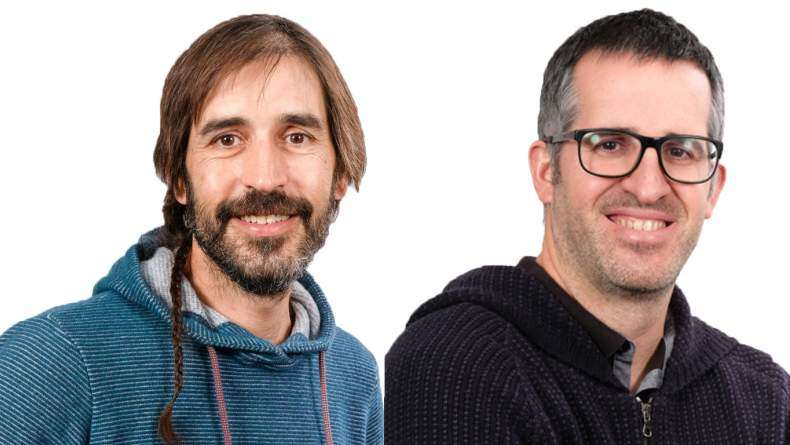BCMaterials Fortnightly Seminar #54: Cristina Echevarría and Nuria García

CRISTINA ECHEVARRÍA
(BCMATERIALS)
Sm-based 1:12 systems: induction of a low melting phase
In the last years, the critical supply of raw rare earth (RE) elements and has motivated the search for RE-free and RE-lean hard magnetic materials. One of these compounds is the tetragonal REFe12 with the ThMn12 phase structure (I4/mmm). However, some stability issues have to be solved. In this sense, several attempts for stabilizing the ThMn12 have performed in RE(Fe,M)12 (M = Co, Ti, Mo, Si…). To further exploit the advantage of low RE content, particular attention has been recently paid to compounds with Samarium, as it is a “non-as critical” RE metal (cheap). However, Sm has a low evaporation temperature and, thus, it is very difficult to obtain single phase alloys. On the other hand, it is important to control the microstructure of these alloys, and thus be able to enhance coercivity, through e.g. nanostructuring. It is very common to sinter two phases (hard and soft), at high temperatures and high pressures, in order to obtain a high performance permanent magnet, i.e. with a large value of (BH)max. This is usually achieved by compaction of powders or by infiltration. However, this requires several steps and high temperatures could destroy the microstructure. In this sense, we want to induce a low melting phase during arc melting so that we will get the bulk alloy with the desired microstructure from the very first step. For this, we have arc melted several SmFe11Ti1 and SmFe10Si2 alloys with 6 at.% In, Bi or Zn. Here we present the structural (XRD, DSC, SEM) and magnetic characterization (VSM) of these alloys.
NURIA GARCÍA
(BCMATERIALS)
Shape memory systems based on polycyclooctene
Shape memory polymers are those capable of recovering their original shape after having been deformed into a different one when an external stimulus is applied. Particularly, polycyclooctene is a semicrystalline polymer, which needs to be crosslinked to be a shape memory polymer, being the melting temperature of the crystallites the transition temperature of the shape memory effect. This talk has as objective give an overview of the work performed during my PhD using this polymer crosslinked with peroxide, with gamma rays and blending with ionomers.
Related news
María Calles, New Doctor of BCMaterials
We would like to congratulate María Calles García for obtaining her PhDs in Materials Science and Technology from the UPV/EHU. On December 4 made a brilliant defense of her thesis titled ‘Chelating…Invited Talk with Barcelona Microelectronics Institute’s researchers (December 3)
On December 3 at 12:00 PM, in the Martina Casiano Auditorium in Leioa, BCMaterials will host senior researchers Antón Guimerà and Xavier Illa from the Barcelona Microelectronics Institute (IMB-CNM,…Invited Talk by Liu Yao on Lithium-Metal Batteries (December 2)
Next Monday, December 2, Liu Yao, professor at the Shanghai Institute of Applied Physics, will give an invited lecture at BCMaterials entitled ‘Li-Metal Batteries: From Liquid to Solid-State’. The…Success of BCMaterials’ Annual Workshop on Critical Materials
The 2025 edition of BCMaterials’ annual workshop gathered nearly one hundred participants on November 19 in Leioa to review the latest advances and discuss critical materials, their applications, and…



